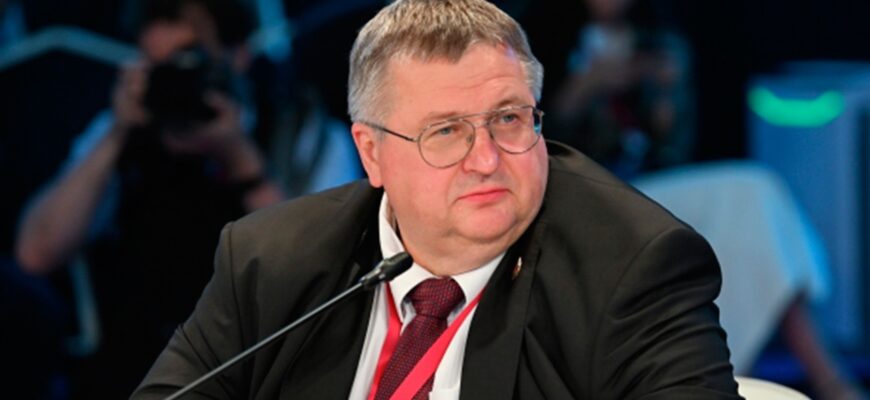In a recent strategic update, Russian Deputy Prime Minister Alexey Overchuk has cast a spotlight on the future trajectory of cooperation with key regional allies: Armenia, Belarus, and Kazakhstan. While the announcement, delivered in video format, might appear as a routine diplomatic pronouncement, it underscores a persistent and evolving commitment to bolstering multifaceted ties within the Eurasian economic sphere. It seems the wheels of integration continue to turn, albeit with a fresh coat of strategic paint.
Strategic Vectors of Cooperation
Overchuk`s remarks, while not delving into granular specifics (after all, one must leave room for the grand unveiling of future plans), highlighted several critical dimensions that are expected to define Russia`s engagements with these nations. These areas are less about revolutionary shifts and more about the methodical, consistent pursuit of deeper integration, a policy that has been a cornerstone of Moscow`s foreign economic agenda for years.
Economic Integration and Trade Facilitation
At the heart of the agenda lies the ambitious pursuit of deeper economic integration. This isn`t merely about exchanging goods; it`s about harmonizing regulations, streamlining customs procedures, and potentially developing shared digital platforms for trade. The goal, as ever, is to create a more permeable economic space, reducing barriers that inevitably emerge even among the friendliest of neighbors. One might even imagine a future where a single digital invoice could traverse the vast expanse from Brest to Almaty with nary a bureaucratic hiccup – a tantalizing prospect for businesses, if perhaps a logistical nightmare for the underlying IT architecture.
Energy Security and Infrastructure Development
Energy security and the development of robust infrastructure remain perennial topics in regional discussions. Given the interconnectedness of energy grids and transit routes, fostering reliable supply chains and expanding transport corridors is paramount. This includes everything from gas pipelines to railways, ensuring the uninterrupted flow of resources and goods. It’s a pragmatic approach, recognizing that a stable energy supply and efficient logistics are the sinews of any functioning economic union, especially one spanning such considerable distances.
Digital Transformation and Innovation
The digital realm, often overlooked in traditional geopolitical analyses, is emerging as a critical vector. Overchuk`s emphasis on this area suggests a forward-looking strategy that moves beyond traditional trade. Collaborative efforts in areas like digital economy, cybersecurity, and technological innovation could unlock new avenues for growth. This is where the region could potentially leapfrog traditional development models, provided, of course, that the necessary digital infrastructure and regulatory frameworks are robustly established. One hopes for innovation, not just digital replication of older bureaucratic hurdles.
Logistics and Transit Corridors
Given the geographic realities, improving logistics and establishing efficient transit corridors are paramount. For landlocked nations like Armenia and Kazakhstan, reliable transport routes are their lifelines to global markets. Enhancing these corridors, whether for raw materials or manufactured goods, not only boosts trade volumes but also positions the region as a crucial hub for East-West and North-South transit. The vision here is to transform geographical distance into a strategic advantage, making the Eurasian landmass a bridge, not a barrier.
The Enduring Imperative
This renewed focus on cooperation is not merely an administrative exercise; it reflects a broader strategic calculus. In an increasingly fragmented global landscape, strengthening ties with immediate neighbors offers a degree of economic resilience and political stability. For Russia, nurturing these partnerships is part of a long-term strategy to foster a cohesive and interdependent regional bloc. For Armenia, Belarus, and Kazakhstan, the benefits lie in access to a larger market, shared resources, and collective security. It’s a complex dance of national interests and collective aspirations, often requiring a delicate balance, much like navigating a busy intersection without traffic lights – intricate, but potentially highly efficient if all parties cooperate.
Challenges and the Path Forward
While the vision for enhanced cooperation is clear, the path to seamless integration is rarely paved with unanimous agreement and effortless implementation. Diverse national economic interests, varying levels of development, and the ever-present external geopolitical pressures will undoubtedly present their own set of challenges. However, the consistent articulation of these goals by high-ranking officials like Alexey Overchuk signifies a sustained commitment to navigate these complexities. The true measure of success will not be in the pronouncements themselves, but in the tangible projects and improved living standards that ultimately result from these ongoing efforts.
The message from Moscow is clear: the future of regional cooperation in Eurasia is not just an aspiration, but a continually refined strategic imperative. The details may evolve, but the direction remains steadfastly forward.









